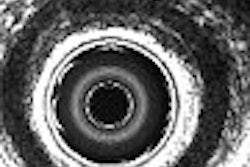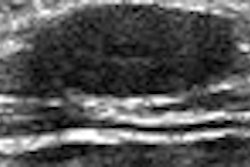AuntMinnie.com presents a critique of ultrasound in clinical practice, by Dr. Lars Thorelius, a radiologist at Linköping University Hospital in Sweden. Thorelius charges that ultrasound's increasingly minor role is a result of poor management and training, rather than any shortcomings in the modality.
Many radiology ultrasound departments provide diagnostic services of excellent quality. Unfortunately, far too many ultrasound departments are doing a poor job.
No other imaging modality has such a wide gap between the best and the worst departments. It is widely recognized that ultrasound is losing patients to CT, MRI, and PET/CT every day in radiology. This is despite the fact that ultrasound technically has the potential to do an equal or better job in many diagnostic fields, provided there are well-trained hands and eyes.
There are reasons for ultrasound's underdog position in radiology. This article attempts to examine one of the core problems with an open mind, and open a debate about what we can do to fix what we broke. The radiology departments that excel in ultrasound are not the primary cause of concern, of course, but I believe they shoulder much of the responsibility by accepting matters as they are within radiology as a whole.
The dubious trust
Try to picture a radiology department in a hospital (let's call it "NoHope Hospital") that is equipped with an MRI lab that pursues an ultrasound workflow, and a typical CT lab utilizing everything that a modern PACS and radiology workflow has to offer.
A patient is placed in the MRI scanner, an image volume is acquired, and image stacks are created. The technologists or radiologists do the best they can at the local MRI monitor, scrolling through the stacks and looking through the volume using a moving arbitrary MPR plane in their effort to detect pathology. They store still images of what they find interesting, plus some key images of normal anatomical structures that they always take. After 10 minutes they are satisfied, look through the images taken, write a report, and erase the hard disk while the staff puts the next patient in the scanner.
That's it. The exam volume is erased and gone. From now on, all of the information that can be derived from an MRI exam that was originally full of valuable data are a few snapshots and a written report on a piece of paper or a RIS monitor.
Regardless of the skills of the technologists or radiologists, the retained image material is a product of a highly subjective selection during a brief moment. The selection is influenced by a number of parameters: The questions in the referral (whether they are adequate or not), the tendency to overlook subtle but important information in the presence of eye-catching obvious pathology, the special interests of the examiners, their physical and mental condition while scanning, etc.
The information that was erased after the exam interpretation is lost forever. Very rarely can other radiologists or clinicians correct misinterpretations by rereading the still images, and it is virtually impossible to make additional discoveries from them. All the referring clinicians have to lean on is their trust in the examiner. "If Carl didn't see a metastasis the last time, there must not be one!"
The liberty of personal protocols
Data loss isn't the only problem. This very odd MRI department has several MRI scanners. The technicians have over the years developed their very own preferences for acquisitions: One leans heavily toward T2-weighted protocols on the oldest 0.5-tesla machine, while another prefers the second-newest 1.5-tesla machine with less T2-weighted imaging.
Without the benefit of stored image volumes, who could prove that one of them is less efficient? The written reports of both would state the same hard facts to the clinician, although perceptions of the images are very different. Despite MRI's superiority over CT in many fields, how long would MRI be used for important diagnostic decisions under such circumstances, in the murdering competition of the CT labs' unbiased documentation, storage, and retrievability of full image volumes?
Would our faith and trust in the snapshots and written reports of the best MRI diagnosticians in the world outbalance the possibility to reread the CT exams over and over again?
Would the workflow and documentation of MRI be considered good medical practice, or might the clinic even be sued for malpractice? Could it even be judged illegal by a court of law, considering the obvious shortcomings of not applying the CT workflow to the MRI lab?
Would anyone consider providing "evidence-based" studies that the CT workflow outperforms this odd MRI workflow when it is so obvious to all people involved in medicine?
Ultrasound workflow
Now let's look at the workflow in your clinic's ultrasound department, and compare how ultrasound weighs in compared to CT when it comes to diagnostics that really matter.
Could ultrasound's insignificant role in radiology be connected to the lack of full and unbiased image documentation? Every radiological modality except ultrasound has a natural component of peer surveillance of the performance of all colleagues. Automatically written reports can be compared to the real exams anytime there is a reason to draw new conclusions from the exam. This fact provides a continuous flow of feedback within the radiological community and guarantees a high minimum standard. We all take this for granted and welcome the positive effects. Would MRI be where it is today, assuming the standards of objectivity and documentation that we currently accept in ultrasound?
The problem is not that ultrasound lacks medical information, or whether intravenous microbubbles are administered. In my view, the problem is that the information for each exam is far too voluminous and complex for any examiner to comprehend at bedside, and that the examiner does not compensate for this difficulty by scanning and storing entire scans of the targets of interest for later workstation reading.
It's said that no chain is stronger than its weakest link. Sadly, radiology has grown accustomed to limiting its overall dependence on ultrasound to diagnosing pathology that is clearly and quickly seen by the least experienced radiologist or sonographer available at the clinic.
And because many still images are useless in retrospect, even this low level of confidence can't be guaranteed. This limitation is underscored by some clinics' practice of mixing low- and high-end machines of different brands with an age span of 15 years or more, often without so much as a software update.
Stepping on toes
Being a radiologist myself, I dare to bring these unacceptable conditions into the open. If ultrasound is to compete with other modern modalities, we simply cannot continue exercising ultrasound founded only on faith and trust in the examiner and the written report.
I have first-hand experience of CT, x-ray, interventional radiology, and ultrasound in oncological and gastrointestinal radiology for more than 15 years. I have advanced from an underdog position to that of head of the ultrasound section of the radiology department of a university hospital. With increasing understanding of both ultrasound and radiology, the mere coexistence of ultrasound and radiology in the same organization has become an increasingly puzzling contradiction.
Individual radiologists are not to blame; their participation is the result of radiology's leisurely attitude toward ultrasound. In many departments, radiologists are in charge of ultrasound labs, with unselected patients, after only a few months of training by a local colleague, and perhaps a one-week ultrasound course. Most of them remain at that skill level for the rest of their professional lives, improving only by learning from their own mistakes.
Furthermore, it is common that such radiologists continue to take turns at their ultrasound labs for perhaps a week every couple of months, which gives them far too little continuous experience to accomplish results of acceptable quality. Is this practice anything other than deceitful to the patients, to the honor of young radiologists entering their profession, and to the reputation of ultrasound? A surprising percentage of distinguished radiologists don't know what Euroson is or know about the American Institute of Ultrasound in Medicine (AIUM) conference. They all know what the European Congress of Radiology (ECR) and RSNA meeting are. How can it be acceptable for radiologists to be unaware of their own meetings?
Quality management of radiological ultrasound
NoHope Hospital is far behind other hospitals with regard to MRI quality assurance standards. Naturally, its reimbursement for MRI is poor, and fortunately the patients can be referred to any other hospital for better MRI exams. But when it comes to ultrasound, the patients are not so lucky. Wherever they turn, they meet the same low level of documentation, standardization, and quality assurance.
The question is whether the community of radiologists and sonographers is prepared to face the underlying fundamental causes and abandon all protectionism, swallow their pride, and try to do something about it. I firmly believe there is a light at the end of the tunnel and a way to provide quality documentation even for ultrasound in radiology. But we will have to step on an army of toes on our way there, because it is all about attitude -- the attitude of the radiology community.
I will elaborate on a possible solution in the next article covering this important topic.
By Dr. Lars Thorelius
AuntMinnie.com contributing writer
February 12, 2007
Related Reading
Sonographers: Highly experienced, vastly underappreciated, February 6, 2007
Head and neck surgeons can handle ultrasound, journal article says, January 1, 2007
The future of ultrasound: Used by many, understood by few, October 27, 2006
Detection of liver metastases with contrast-enhanced ultrasound, March 23, 2006
Copyright © 2007 AuntMinnie.com



















